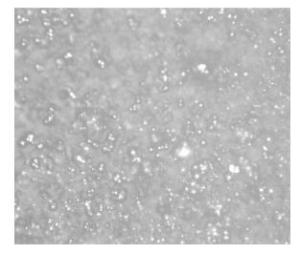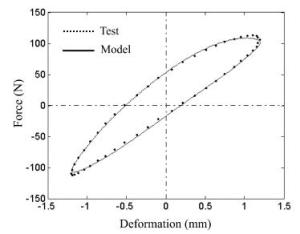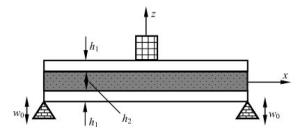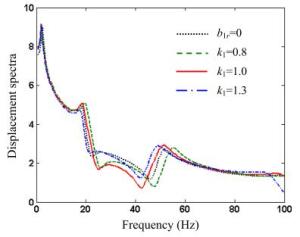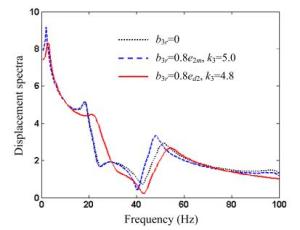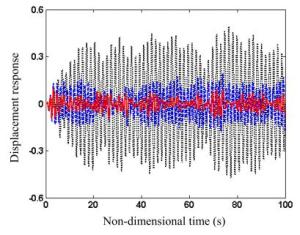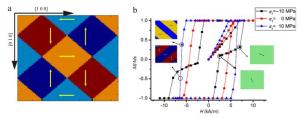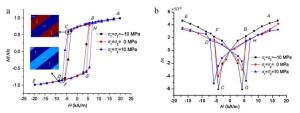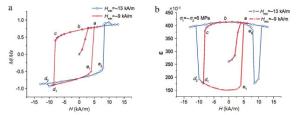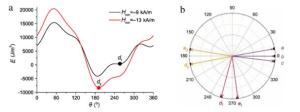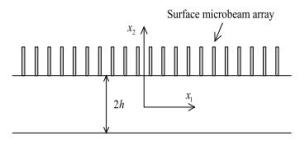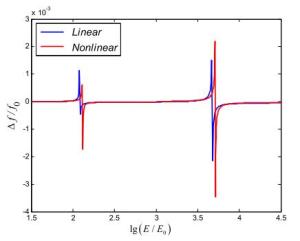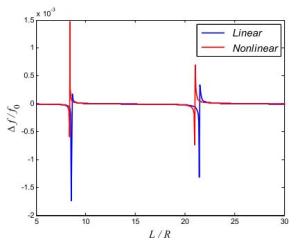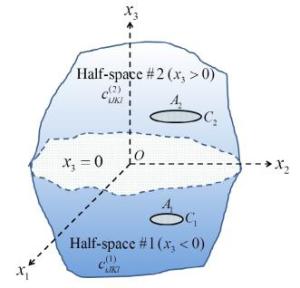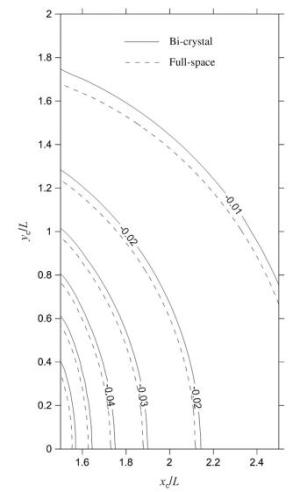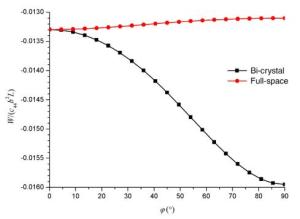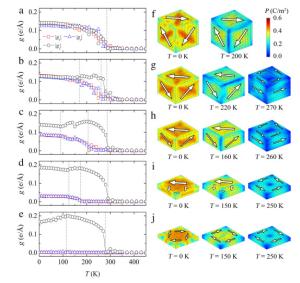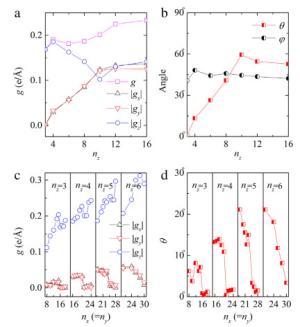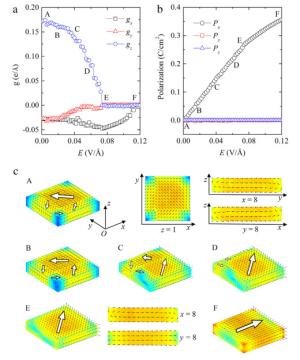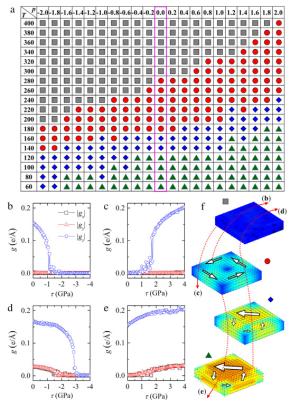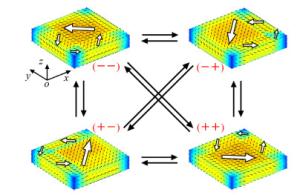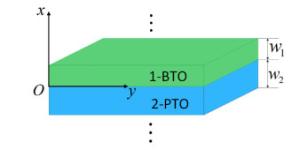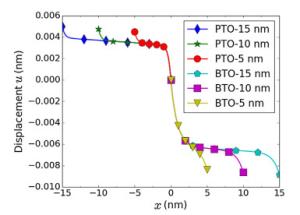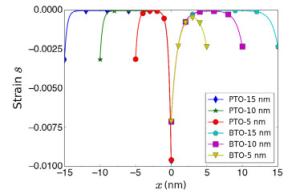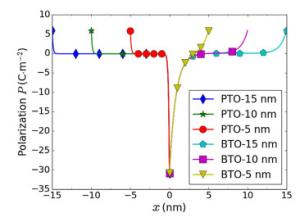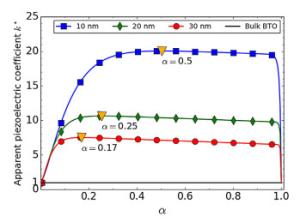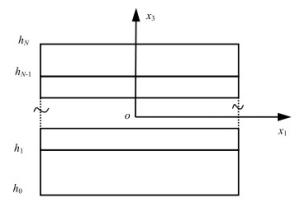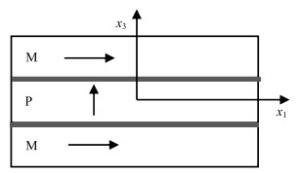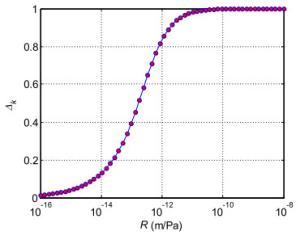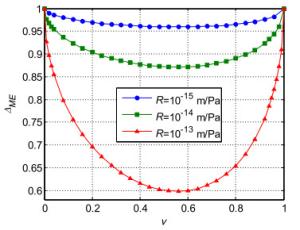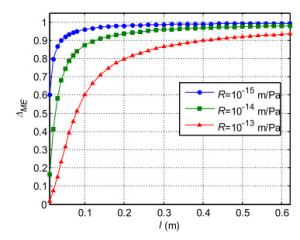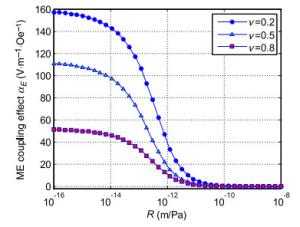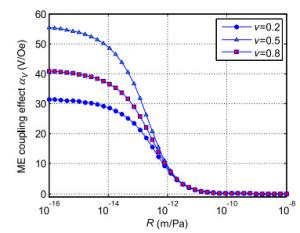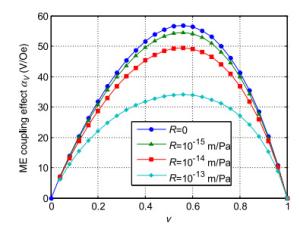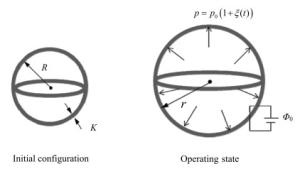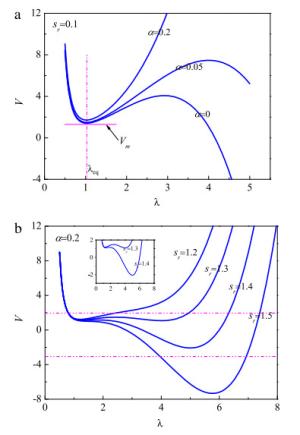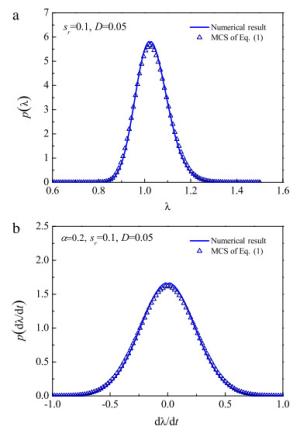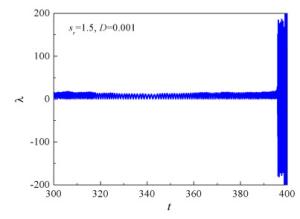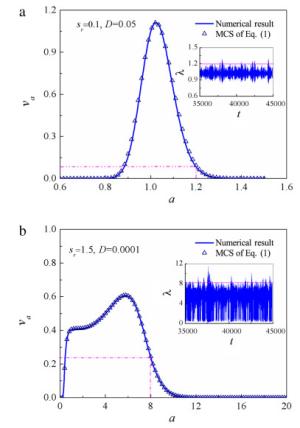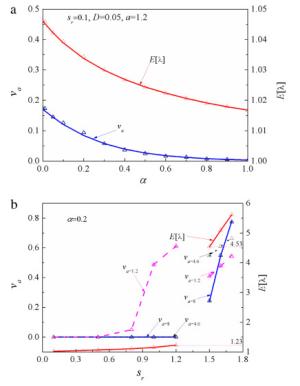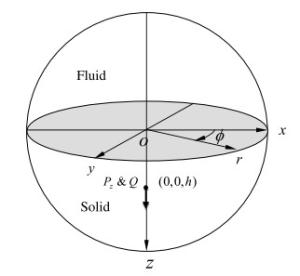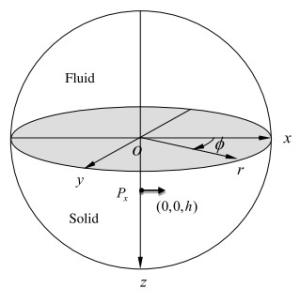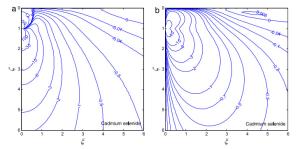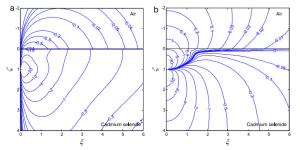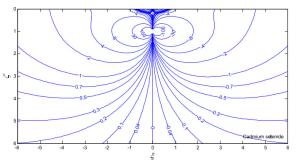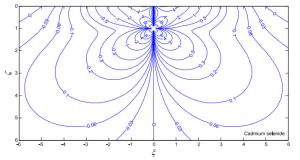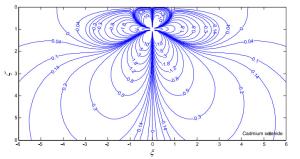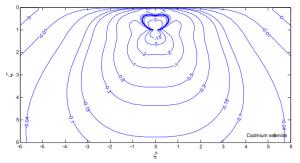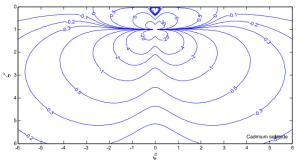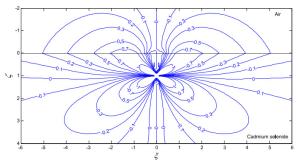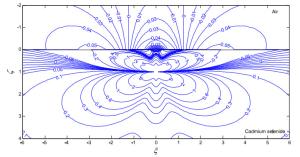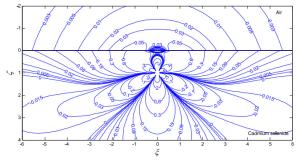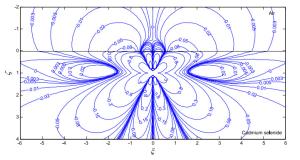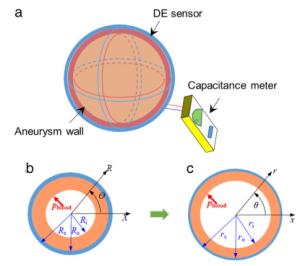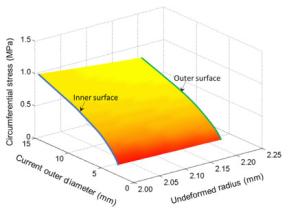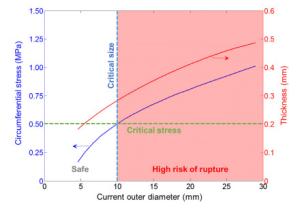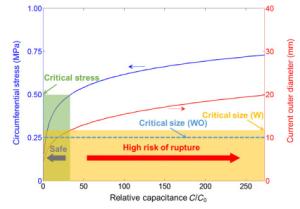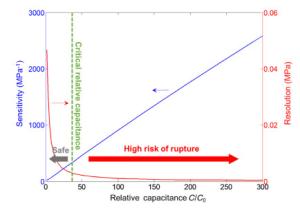Institute of Mechanics,
Chinese Academy of Sciences
2017 Vol.7(2)
Display Mode: |
Theoretical and Applied Mechanics Letters 2017, 7(2): 59-60.
doi: 10.1016/j.taml.2017.03.003
Abstract:
Theoretical and Applied Mechanics Letters 2017, 7(2): 61-66.
doi: 10.1016/j.taml.2017.01.003
Abstract:
Magneto-rheological visco-elastomer (MRVE) as a new smart material developed in recent years has several significant advantages over magneto-rheological liquid. The adjustability of structural dynamics to random environmental excitations is required in vibration control. MRVE can supply considerably adjustable damping and stiffness for structures, and the adjustment of dynamic properties is achieved only by applied magnetic fields with changeless structure design. Increasing researches on MRVE dynamic properties, modeling, and vibration control application are presented. Recent advances in MRVE dynamic properties and structural vibration control application including composite structural vibration mitigation under uniform magnetic fields, vibration response characteristics improvement through harmonic parameter distribution, and optimal bounded parametric control design based on the dynamical programming principle are reviewed. Relevant main methods and results introduced are beneficial to understanding and researches on MRVE application and development.
Magneto-rheological visco-elastomer (MRVE) as a new smart material developed in recent years has several significant advantages over magneto-rheological liquid. The adjustability of structural dynamics to random environmental excitations is required in vibration control. MRVE can supply considerably adjustable damping and stiffness for structures, and the adjustment of dynamic properties is achieved only by applied magnetic fields with changeless structure design. Increasing researches on MRVE dynamic properties, modeling, and vibration control application are presented. Recent advances in MRVE dynamic properties and structural vibration control application including composite structural vibration mitigation under uniform magnetic fields, vibration response characteristics improvement through harmonic parameter distribution, and optimal bounded parametric control design based on the dynamical programming principle are reviewed. Relevant main methods and results introduced are beneficial to understanding and researches on MRVE application and development.
Theoretical and Applied Mechanics Letters 2017, 7(2): 67-71.
doi: 10.1016/j.taml.2017.02.001
Abstract:
The stress-induced magnetic domain switching in FeGa thin films is studied using phase-field method. In particular, the magnetic field is applied along the [110] direction and biaxial stresses are applied along [100] and [010]. A compressive pre-stress corresponds to a smaller coercive magnetic field while a tensile pre-stress corresponded to a larger coercive field. At the same time, it is also found that the transition between butterfly and square-like magnetostriction loops occurs at the critical opposite biaxial stress state. The two different evolutions correspond to two different mechanisms: one is that the single domain swings across a fan area back and forth; the other is that the single domain turns a clockwise circle. The results can be explained by the stress tuned anisotropy energy well.
The stress-induced magnetic domain switching in FeGa thin films is studied using phase-field method. In particular, the magnetic field is applied along the [110] direction and biaxial stresses are applied along [100] and [010]. A compressive pre-stress corresponds to a smaller coercive magnetic field while a tensile pre-stress corresponded to a larger coercive field. At the same time, it is also found that the transition between butterfly and square-like magnetostriction loops occurs at the critical opposite biaxial stress state. The two different evolutions correspond to two different mechanisms: one is that the single domain swings across a fan area back and forth; the other is that the single domain turns a clockwise circle. The results can be explained by the stress tuned anisotropy energy well.
Theoretical and Applied Mechanics Letters 2017, 7(2): 72-75.
doi: 10.1016/j.taml.2016.12.003
Abstract:
We study the dynamic behavior of a quartz crystal resonator (QCR) in thickness-shear vibrations with the upper surface covered by an array of micro-beams (MBs) under large deflection. Through taking into account the continuous conditions of shear force and bending moment at the interface of MBs/resonator, dependences of frequency shift of the compound QCR system versus material parameter and geometrical parameter are illustrated in detail for nonlinear and linear vibrations. It is found that the frequency shift produces a little right (left) translation for increasing elastic modulus (length/radius ratio) of MBs. Moreover, the frequency right (left) translation distance caused by nonlinear deformation becomes more serious in the second-order mode than in the first-order one.
We study the dynamic behavior of a quartz crystal resonator (QCR) in thickness-shear vibrations with the upper surface covered by an array of micro-beams (MBs) under large deflection. Through taking into account the continuous conditions of shear force and bending moment at the interface of MBs/resonator, dependences of frequency shift of the compound QCR system versus material parameter and geometrical parameter are illustrated in detail for nonlinear and linear vibrations. It is found that the frequency shift produces a little right (left) translation for increasing elastic modulus (length/radius ratio) of MBs. Moreover, the frequency right (left) translation distance caused by nonlinear deformation becomes more serious in the second-order mode than in the first-order one.
Theoretical and Applied Mechanics Letters 2017, 7(2): 76-80.
doi: 10.1016/j.taml.2017.02.002
Abstract:
Interface dislocations may dramatically change the electric properties, such as polarization, of the piezoelectric crystals. In this paper, we study the linear interactions of two interface dislocation loops with arbitrary shape in generally anisotropic piezoelectric bi-crystals. A simple formula for calculating the interaction energy of the interface dislocation loops is derived and given by a double line integral along two closed dislocation curves. Particularly, interactions between two straight segments of the interface dislocations are solved analytically, which can be applied to approximate any curved loop so that an analytical solution can be also achieved. Numerical results show the influence of the bi-crystal interface as well as the material orientation on the interaction of interface dislocation loops.
Interface dislocations may dramatically change the electric properties, such as polarization, of the piezoelectric crystals. In this paper, we study the linear interactions of two interface dislocation loops with arbitrary shape in generally anisotropic piezoelectric bi-crystals. A simple formula for calculating the interaction energy of the interface dislocation loops is derived and given by a double line integral along two closed dislocation curves. Particularly, interactions between two straight segments of the interface dislocations are solved analytically, which can be applied to approximate any curved loop so that an analytical solution can be also achieved. Numerical results show the influence of the bi-crystal interface as well as the material orientation on the interaction of interface dislocation loops.
Theoretical and Applied Mechanics Letters 2017, 7(2): 81-87.
doi: 10.1016/j.taml.2017.01.001
Abstract:
Shape-induced phase transition of vortex domain structures (VDSs) in BaTiO3 (BT) nanodots under open circuit boundary condition have been investigated using an effective Hamiltonian method. Our calculation indicates the tetragonal VDS missing in cubic BT nanodots can be induced by varying the shape of a nanodot from cube to platelet. Interestingly, a novel VDS is found in BT nanoplatelets in our simulations. Further investigation shows that it is a result of compromise between the ground state and the symmetry of the shape of the nanodot. Furthermore, based on the novel VDS, routes of controlling VDSs governed by homogeneous electric field and uniform stress are discussed. In particular, our results show the possibility of designing multi-states devices based on a single VDS.
Shape-induced phase transition of vortex domain structures (VDSs) in BaTiO3 (BT) nanodots under open circuit boundary condition have been investigated using an effective Hamiltonian method. Our calculation indicates the tetragonal VDS missing in cubic BT nanodots can be induced by varying the shape of a nanodot from cube to platelet. Interestingly, a novel VDS is found in BT nanoplatelets in our simulations. Further investigation shows that it is a result of compromise between the ground state and the symmetry of the shape of the nanodot. Furthermore, based on the novel VDS, routes of controlling VDSs governed by homogeneous electric field and uniform stress are discussed. In particular, our results show the possibility of designing multi-states devices based on a single VDS.
Theoretical and Applied Mechanics Letters 2017, 7(2): 88-92.
doi: 10.1016/j.taml.2017.02.007
Abstract:
Piezoelectric superlattice is a potential component for nanoelectromechanical systems. Due to the strong nonlocal effect such as flexoelectric effect at interfaces, classical piezoelectric theory is unable to accurately describe the electromechanical response of piezoelectric superlattice at nanoscale scale. Based on the previous nonlocal thermodynamics theory with flexoelectric effect Liu et al. (2016), the sizedependent electromechanical properties of piezoelectric superlattices made of BaTiO3 (BTO) and PbTiO3 (PTO) layers are investigated systematically in the present work. Giant strain gradient is found near the interface between BTO and PTO layers, which leads to the significant enhancement of polarization in the superlattice due to the flexoelectric effect. For the piezoelectric BTO-PTO superlattices with different unitcell sizes, the thickness of interface with nontrivial strain gradient is almost constant. The influence of strain gradient at the interface becomes significant when the size of superlattice decreases. As a result, a strong size dependence of electromechanical properties is predicted for the piezoelectric BTO-PTO superlattices. In particular, for the superlattices with a specific thickness ratio of BTO and PTO layers, the piezoelectric response can be several times larger than that of bulk structure. The present work demonstrates a practical way to design the piezoelectric superlattices with high piezoelectric coefficient by using the nonlocal effect at nanoscale.
Piezoelectric superlattice is a potential component for nanoelectromechanical systems. Due to the strong nonlocal effect such as flexoelectric effect at interfaces, classical piezoelectric theory is unable to accurately describe the electromechanical response of piezoelectric superlattice at nanoscale scale. Based on the previous nonlocal thermodynamics theory with flexoelectric effect Liu et al. (2016), the sizedependent electromechanical properties of piezoelectric superlattices made of BaTiO3 (BTO) and PbTiO3 (PTO) layers are investigated systematically in the present work. Giant strain gradient is found near the interface between BTO and PTO layers, which leads to the significant enhancement of polarization in the superlattice due to the flexoelectric effect. For the piezoelectric BTO-PTO superlattices with different unitcell sizes, the thickness of interface with nontrivial strain gradient is almost constant. The influence of strain gradient at the interface becomes significant when the size of superlattice decreases. As a result, a strong size dependence of electromechanical properties is predicted for the piezoelectric BTO-PTO superlattices. In particular, for the superlattices with a specific thickness ratio of BTO and PTO layers, the piezoelectric response can be several times larger than that of bulk structure. The present work demonstrates a practical way to design the piezoelectric superlattices with high piezoelectric coefficient by using the nonlocal effect at nanoscale.
Theoretical and Applied Mechanics Letters 2017, 7(2): 93-99.
doi: 10.1016/j.taml.2017.02.005
Abstract:
Two-dimensional (2D) equations for multiferroic (MF) laminated plates with imperfect interfaces are established in this paper. The interface between two adjacent sublayers, which are not perfectly bonded together, is modeled as a general spring-type layer. The mechanical displacements, and the electric and magnetic potentials of the two adjacent layers are assumed to be discontinuous at the interface. As an example, the influences of imperfect interfaces on the magnetoelectric (ME) coupling effects in an MF sandwich plate are investigated with the established 2D governing equations. Numerical results show that the imperfect interfaces have a significant impact on the ME coupling effects in MF laminated structures.
Two-dimensional (2D) equations for multiferroic (MF) laminated plates with imperfect interfaces are established in this paper. The interface between two adjacent sublayers, which are not perfectly bonded together, is modeled as a general spring-type layer. The mechanical displacements, and the electric and magnetic potentials of the two adjacent layers are assumed to be discontinuous at the interface. As an example, the influences of imperfect interfaces on the magnetoelectric (ME) coupling effects in an MF sandwich plate are investigated with the established 2D governing equations. Numerical results show that the imperfect interfaces have a significant impact on the ME coupling effects in MF laminated structures.
Theoretical and Applied Mechanics Letters 2017, 7(2): 100-104.
doi: 10.1016/j.taml.2017.03.005
Abstract:
The ratio of expectation crossings of dielectric elastomer balloon excited by random pressure is analytically evaluated in this letter. The Mooney-Rivlin model is adopted to describe the constitutive relation while the random pressure is described by Gaussian white noise. Through a specific transformation, the stochastic differential equations for the total energy and phase are derived. With the application of the stochastic averaging, the system total energy is then approximated by a one-dimensional diffusion process. Solving the associated Fokker-Planck-Kolmogorov (FPK) equation yields the stationary probability density of the system total energy. The ratio of expectation crossings is then derived based on the joint stationary probability density of stretch ratio and its ratio of change. The efficacy and accuracy of the proposed procedure are verified by comparing with the results from Monte Carlo simulation (MCS).
The ratio of expectation crossings of dielectric elastomer balloon excited by random pressure is analytically evaluated in this letter. The Mooney-Rivlin model is adopted to describe the constitutive relation while the random pressure is described by Gaussian white noise. Through a specific transformation, the stochastic differential equations for the total energy and phase are derived. With the application of the stochastic averaging, the system total energy is then approximated by a one-dimensional diffusion process. Solving the associated Fokker-Planck-Kolmogorov (FPK) equation yields the stationary probability density of the system total energy. The ratio of expectation crossings is then derived based on the joint stationary probability density of stretch ratio and its ratio of change. The efficacy and accuracy of the proposed procedure are verified by comparing with the results from Monte Carlo simulation (MCS).
Theoretical and Applied Mechanics Letters 2017, 7(2): 105-116.
doi: 10.1016/j.taml.2017.03.002
Abstract:
Because most piezoelectric devices have interfaces with fluid in engineering, it is valuable to study the coupled field between fluid and piezoelectric media. As the fundamental problem, the 3D Green's functions for point forces and point charge loaded in the fluid and piezoelectric bimaterials are studied in this paper. Based on the 3D general solutions expressed by harmonic functions, we constructed the suitable harmonic functions with undetermined constants at first. Then, the couple field in the fluid and piezoelectric bimaterials can be derived by substitution of harmonic functions into general solutions. These constants can be obtained by virtue of the compatibility, boundary, and equilibrium conditions. At last, the characteristics of the electromechanical coupled fields are shown by numerical results.
Because most piezoelectric devices have interfaces with fluid in engineering, it is valuable to study the coupled field between fluid and piezoelectric media. As the fundamental problem, the 3D Green's functions for point forces and point charge loaded in the fluid and piezoelectric bimaterials are studied in this paper. Based on the 3D general solutions expressed by harmonic functions, we constructed the suitable harmonic functions with undetermined constants at first. Then, the couple field in the fluid and piezoelectric bimaterials can be derived by substitution of harmonic functions into general solutions. These constants can be obtained by virtue of the compatibility, boundary, and equilibrium conditions. At last, the characteristics of the electromechanical coupled fields are shown by numerical results.
Theoretical and Applied Mechanics Letters 2017, 7(2): 117-120.
doi: 10.1016/j.taml.2017.01.007
Abstract:
The unpredictable rupture of saccular aneurysms especially of the intracerebral aneurysm is a knotty problem that always results in high mortality. Traditional diagnosis of medical images, which gives the aneurysm size and compares with a speculated critical size from clinical statistics, was demonstrated inadequate to forecasting rupture. Here, we propose a new detecting strategy that uses a dielectric elastomer (DE) capacitance sensor to monitor the growth of saccular aneurysms and deliver both the wall stress and geometric parameters. Based on the elastic growth theory together with the finite deformation analyses, the correlation between the real-time output capacitance of the DE sensor and the wall stress and/or geometry of an aneurysm is derived. Compared to clinic statistics and biomechanics simulations, the wall stress and geometric size may be used as combined indicators to assess the rupture risk of a saccular aneurysm. Numerical results show that an output relative capacitance of 30 indicates a high risk of rupture. Finally, the sensitivity and resolution of the DE sensor are proved adequately high for monitoring the growth state and evaluating the rupture risk of a saccular aneurysm.
The unpredictable rupture of saccular aneurysms especially of the intracerebral aneurysm is a knotty problem that always results in high mortality. Traditional diagnosis of medical images, which gives the aneurysm size and compares with a speculated critical size from clinical statistics, was demonstrated inadequate to forecasting rupture. Here, we propose a new detecting strategy that uses a dielectric elastomer (DE) capacitance sensor to monitor the growth of saccular aneurysms and deliver both the wall stress and geometric parameters. Based on the elastic growth theory together with the finite deformation analyses, the correlation between the real-time output capacitance of the DE sensor and the wall stress and/or geometry of an aneurysm is derived. Compared to clinic statistics and biomechanics simulations, the wall stress and geometric size may be used as combined indicators to assess the rupture risk of a saccular aneurysm. Numerical results show that an output relative capacitance of 30 indicates a high risk of rupture. Finally, the sensitivity and resolution of the DE sensor are proved adequately high for monitoring the growth state and evaluating the rupture risk of a saccular aneurysm.
 Submit a Paper
Submit a Paper
 Subscription
Subscription
News
MORE+
Call for Papers
MORE+
- Crossing-Mechanics Driven by Big Data
- Machine learning in the fluid mechanics research of wind energy
- Mechanics of Origami/Kirigami structures and metamaterials
- New insights and perspectives on impact biomechanics for human tissues: from injury prevention, protection to protective equipment
- Environmental Mechanics for Extreme Natural Events



